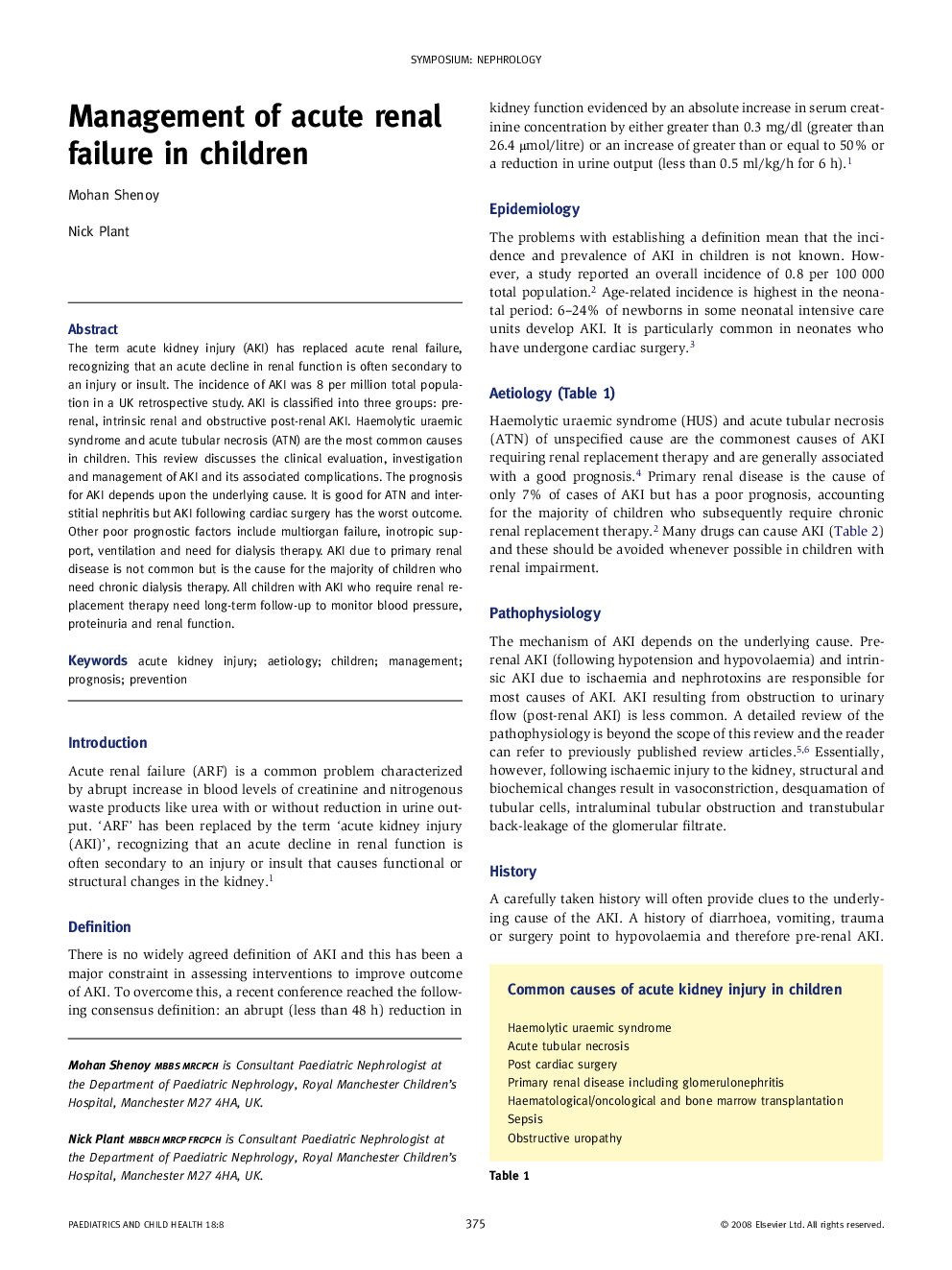| Article ID | Journal | Published Year | Pages | File Type |
|---|---|---|---|---|
| 4173053 | Paediatrics and Child Health | 2008 | 6 Pages |
The term acute kidney injury (AKI) has replaced acute renal failure, recognizing that an acute decline in renal function is often secondary to an injury or insult. The incidence of AKI was 8 per million total population in a UK retrospective study. AKI is classified into three groups: pre-renal, intrinsic renal and obstructive post-renal AKI. Haemolytic uraemic syndrome and acute tubular necrosis (ATN) are the most common causes in children. This review discusses the clinical evaluation, investigation and management of AKI and its associated complications. The prognosis for AKI depends upon the underlying cause. It is good for ATN and interstitial nephritis but AKI following cardiac surgery has the worst outcome. Other poor prognostic factors include multiorgan failure, inotropic support, ventilation and need for dialysis therapy. AKI due to primary renal disease is not common but is the cause for the majority of children who need chronic dialysis therapy. All children with AKI who require renal replacement therapy need long-term follow-up to monitor blood pressure, proteinuria and renal function.
